First Communion
Time to transubstantiate!
For those raised Roman Catholic, First Communion is an important rite of passage, the third of seven sacraments after Baptism and Confession (the others are Confirmation, Anointing of the Sick, Marriage, and for the hardcore, Ordination.) It takes place only after the recipient has reached “the age of reason” (around second grade), coincidentally the time when comedian George Carlin decided to leave the Catholic Church entirely.
Receiving the Eucharist for the first time is significant because the familiar round wafer, and the wine it’s dipped in, are said to have undergone “transubstantiation,” becoming the literal body and blood of Christ. This was the most multi-syllabic word I had ever heard outside of the soundtrack for Mary Poppins, and piano wit Tom Lehrer actually worked it into his song, The Vatican Rag:
First you get down on your knees,
Fiddle with your rosaries,
Bow your head with great respect,
And genuflect, genuflect, genuflect!
Get in line in that processional,
Step into that small confessional.
There the guy who's got religion'll
Tell you if your sin's original.
If it is, try playin' it safer,
Drink the wine and chew the wafer,
Two, four, six, eight,
Time to transubstantiate!
© 2022 David Potorti
First Communion at Immaculate Conception Church
For us parochial school kids, it also was a time to dress up even more than our usual Sunday outfits, perhaps adding a clip-on tie or new shoes. The ceremony was a co-ed affair, with girls wearing white veils being herded into the church alongside boys in white shirts. At that age, dressing up and processing were pretty cool. Afterwards, there were celebrations at home with special food for the neighbors, grandparents, aunts, uncles and cousins who came by to celebrate.
© 2022 David Potorti
Jim Potorti
© 2022 David Potorti
Like a small plum tree, I grew up a little that day.
First Communion, like pretty much everything around Catholicism, came not only with a host but a host of rules. It also was the beginning of my exposure to some uncomfortable concepts. The Baltimore Catechism put it this way:
“Communion is an action. It is the sharing to the full in the Eucharistic sacrifice, by eating the Flesh of Christ as the food of our soul.”
Kids being literal, I have to admit that eating flesh, even capital F flesh, weirded me out a little. I already was in shock from the school insurance policies I was asked to bring home to my parents, listing the dollar payouts for a Chinese menu of traumas including loss of one eye; loss of one eye and one leg; loss of one leg and one arm; loss of both arms; and so on. To this stew of individual body parts I now added the image of flesh eating. Making matters worse, the Catechism recommended:
“To get our souls really clean, we should often take a good bath in the Precious Blood of Christ in the Sacrament of Penance.”
Yes kids, there’s nothing like a bathtub full of blood after a good round of flesh eating. Don’t forget to count your arms and legs!
Then there were the admonitions, foremost among them receiving Communion when your soul was in the wrong state of grace. Souls without sin were healthy; souls with a little sin were sick; and souls with mortal sins were dead. Grace, it turns out, had different speeds. The Catechism explained,
“If someone in mortal sin goes to Communion, he receives no more nourishment than a dead man would if food were forced down his throat. It would be even worse, since it would be a sacrilege.”
Let’s pause for a moment to fully appreciate the image of a child shoving food down the throat of a dead man. Now imagine something even worse! Why would I do that with perfectly good food? And where would I get a dead man, anyway? These are what the Church might call “mysteries.” And you can add the image of a gravestone to the stew.
Going forward, I was presented with a stark choice: enjoying my life, or subsuming it to the rituals of the church. At that age, I don’t remember staying up to watch television at 10 p.m. (after all, I had to go to school the next morning), nor would anything I’d want to watch be shown at that hour (TV programmers knew their audience, and it wasn’t second graders).
If a third thought cloud showed me sleeping happily in bed so I could be well-rested before heading off to school, there’s no question I’d choose that one.
In his book, Religion for Atheists, Alain de Botton notes that in the early church, the Eucharist was an occasion for community members to put their work aside and gather around a table to talk, pray and personally affirm their commitments to Christ and to each other. Only after others complained about the “excessive exuberance” of these agape (“love”) feasts were they were banned, and relegated to meals at home and to ceremonies in the church itself.
I’ll take the noisy table, please.
© 2022 David Potorti

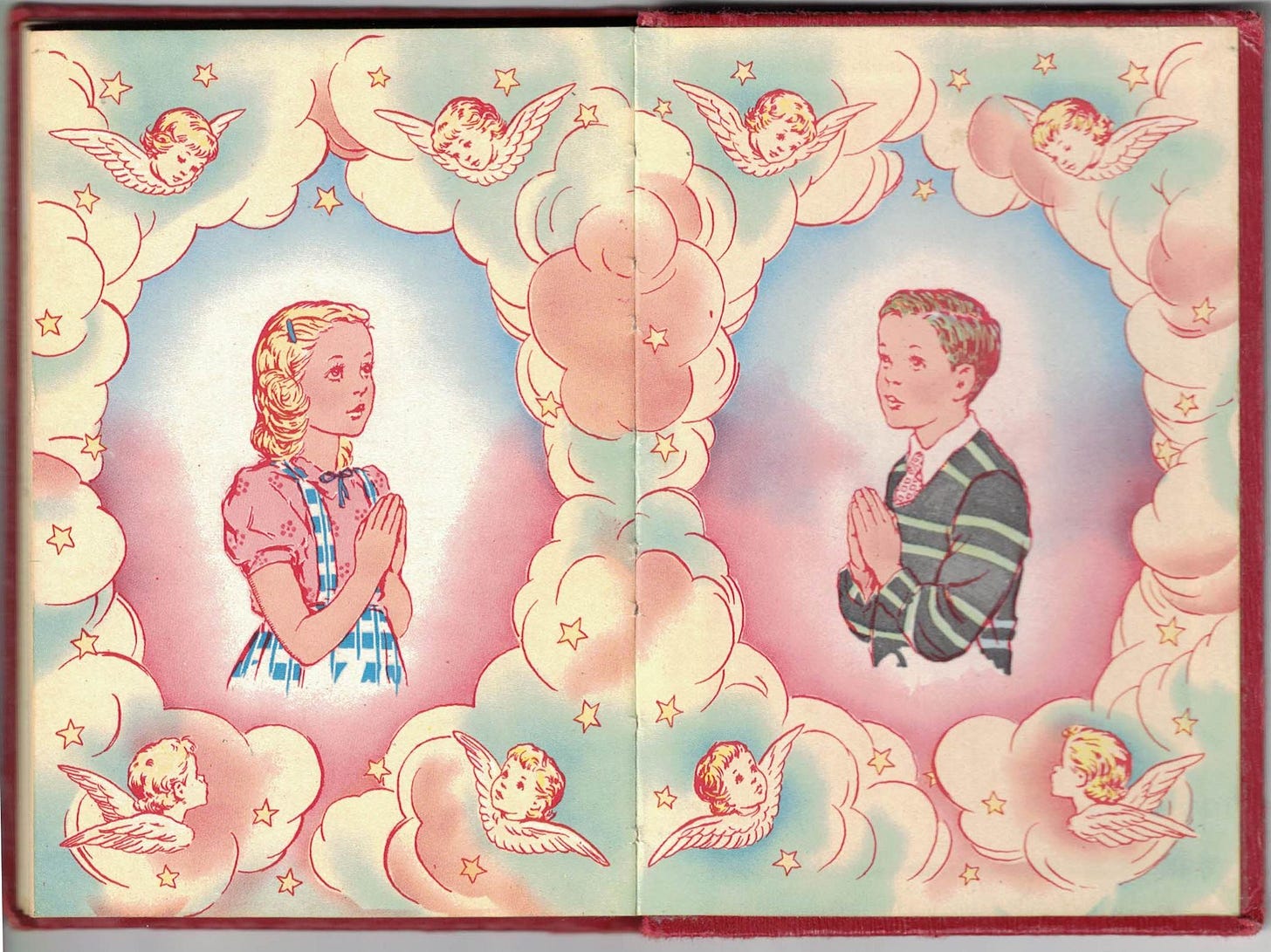
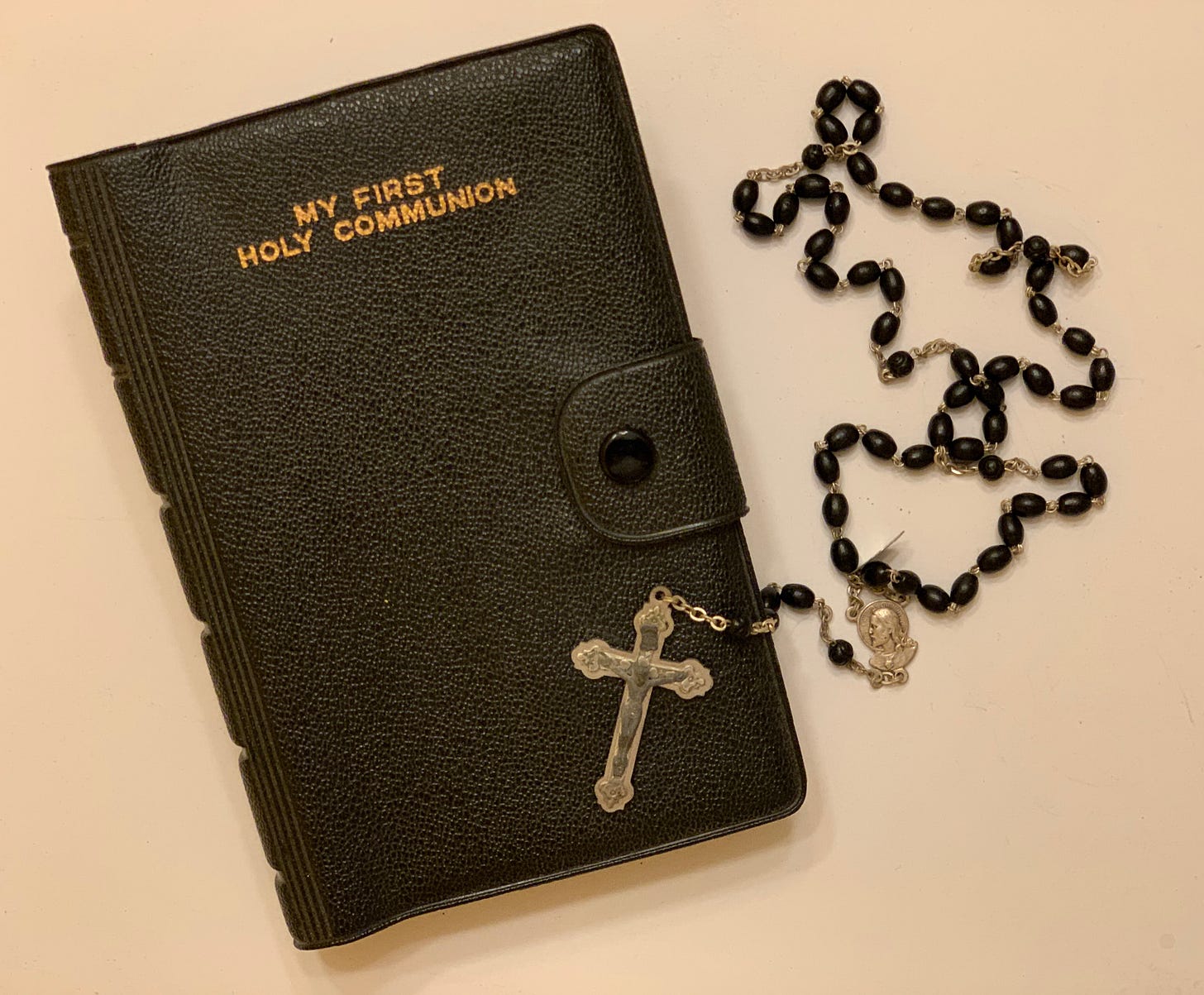
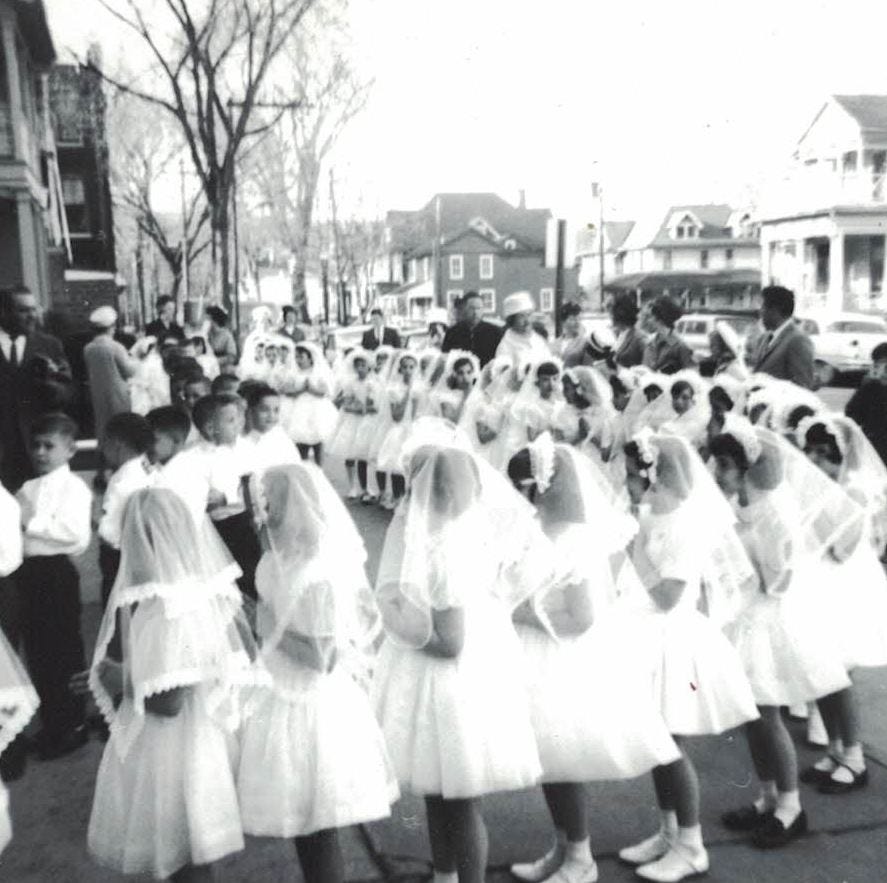
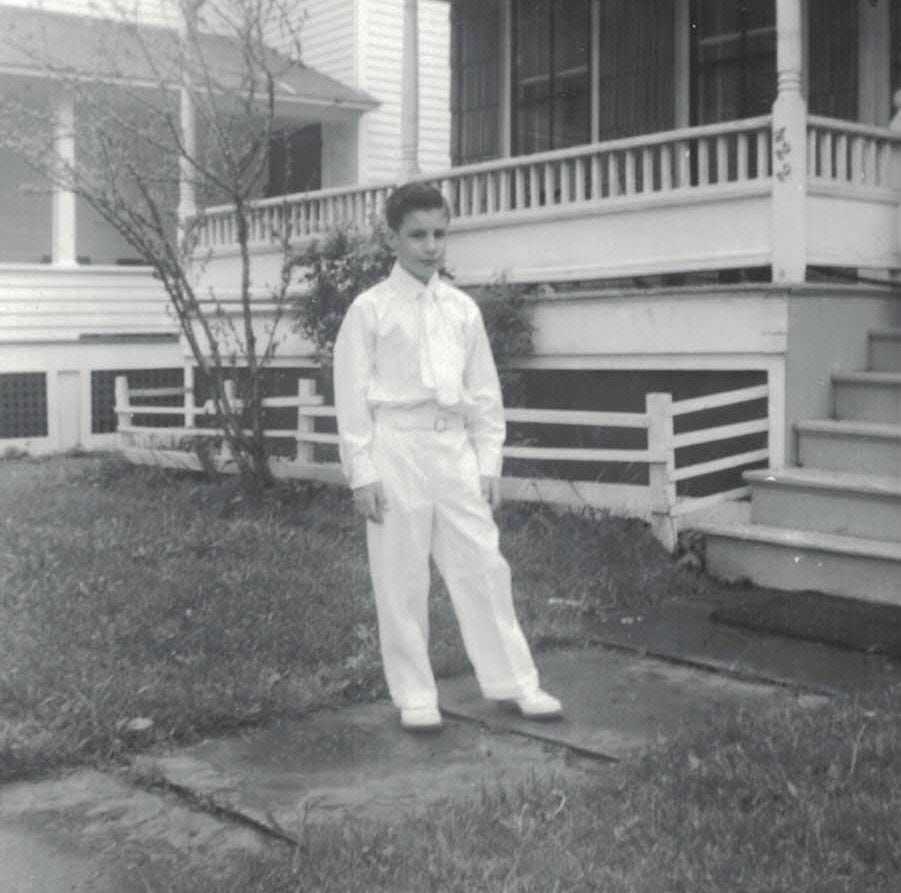
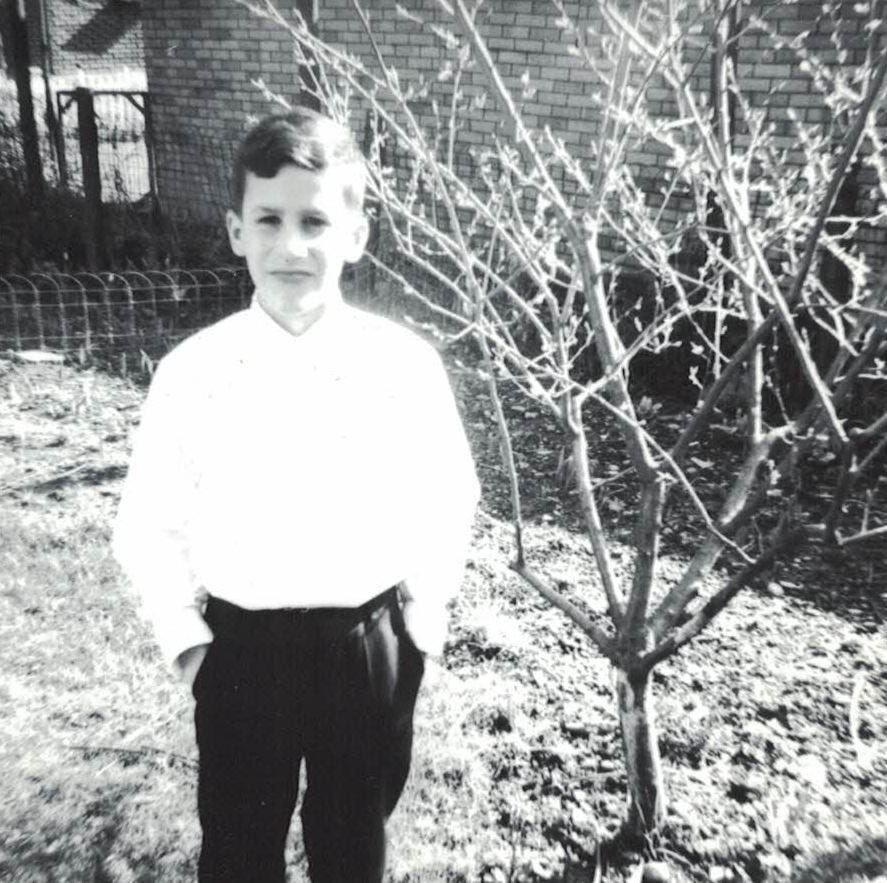
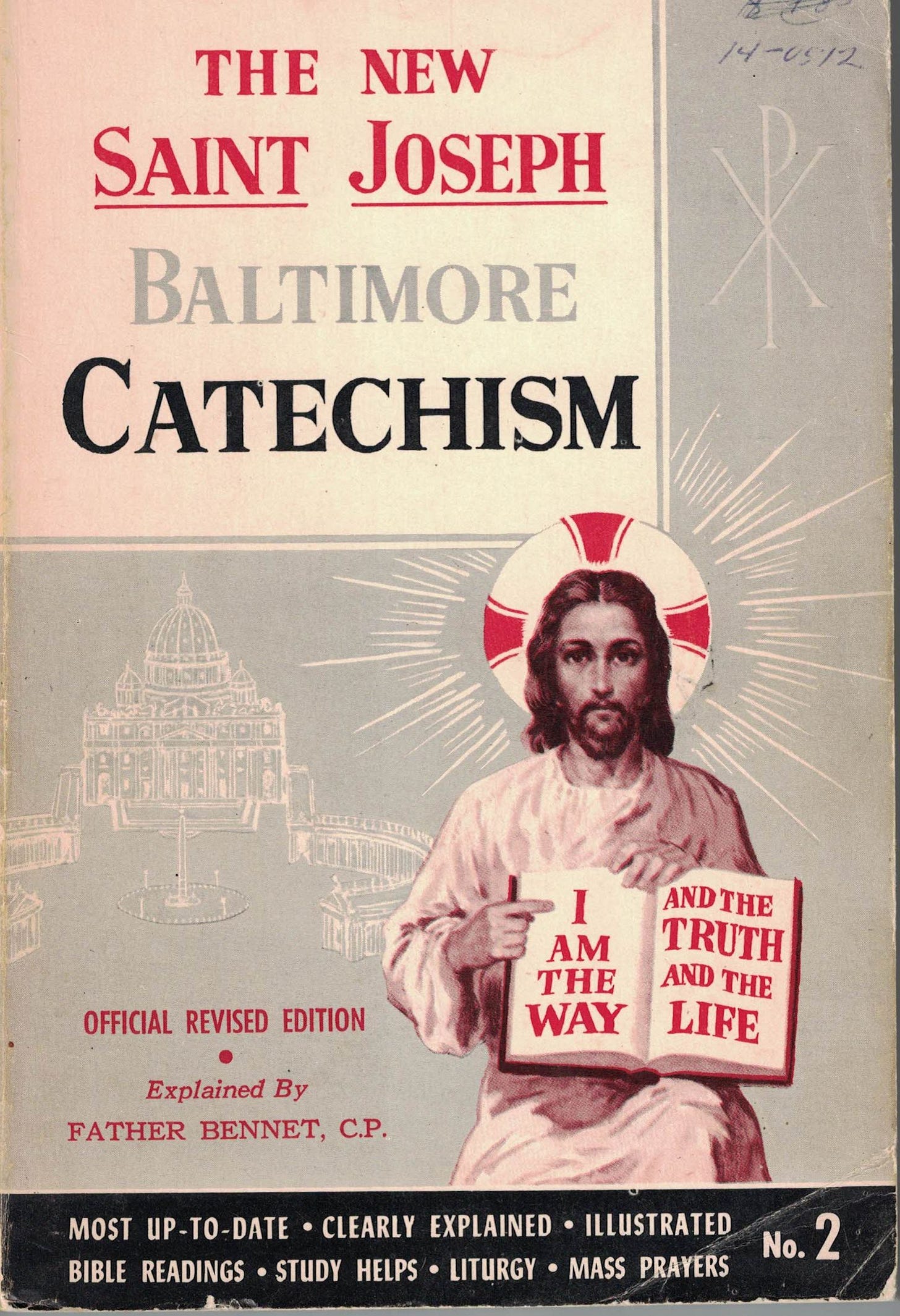
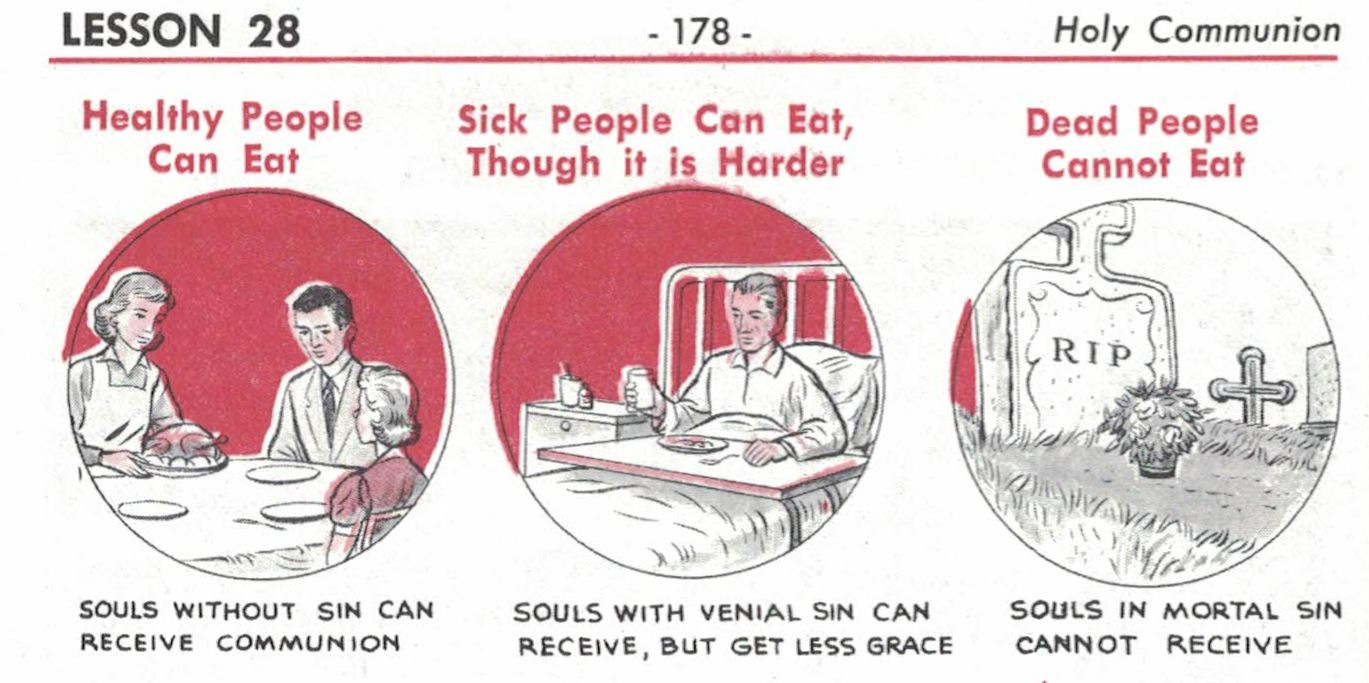
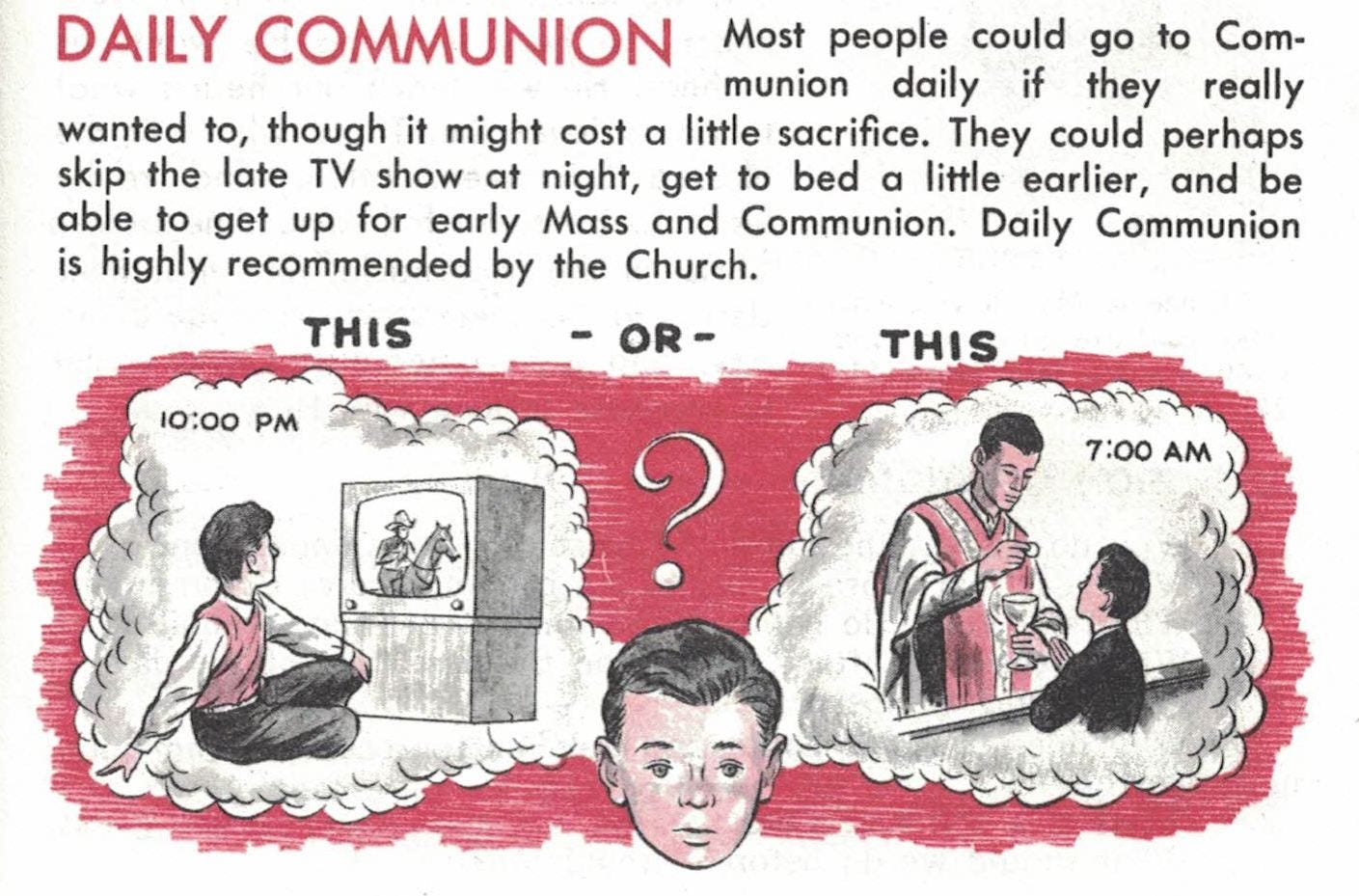
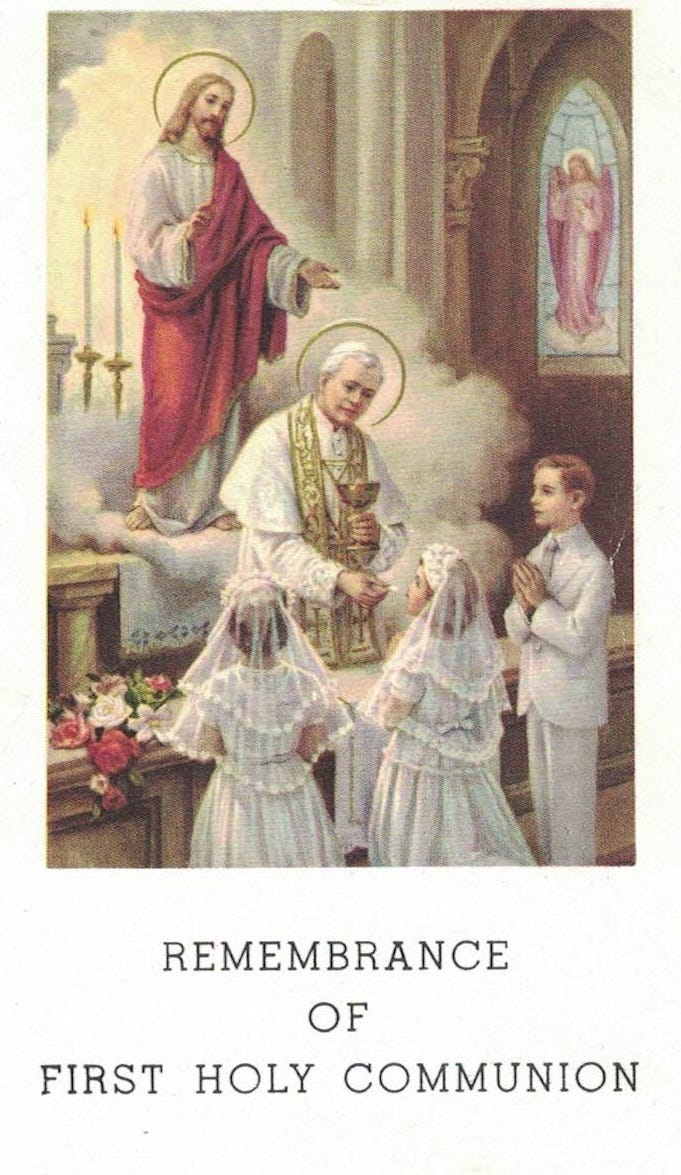
I almost accidentally inhaled part of my lunch while reading this and laughing.
Thank you so much for this peek into the structural details of Catholic childhood.
I first recognized something was going on with the kids in plaid around third grade after school in the public library when a screaming group ran through the reading room (where I was sitting), and into the stacks to play some sort of game of tag. They had a lot more rules than I did at public school or at UU Sunday School, and I understood even then that I was witnessing some kind of stress relief.
Wow.
Gee, David, I never overthought it to that degree. Now I can't unthink what I've read. But I look at the lineup of little cherubs and I think I spot myself. Hard to tell exactly because we all wore nearly the same outfits. I will check the old family films to verify. Good, if terrifying, musings!